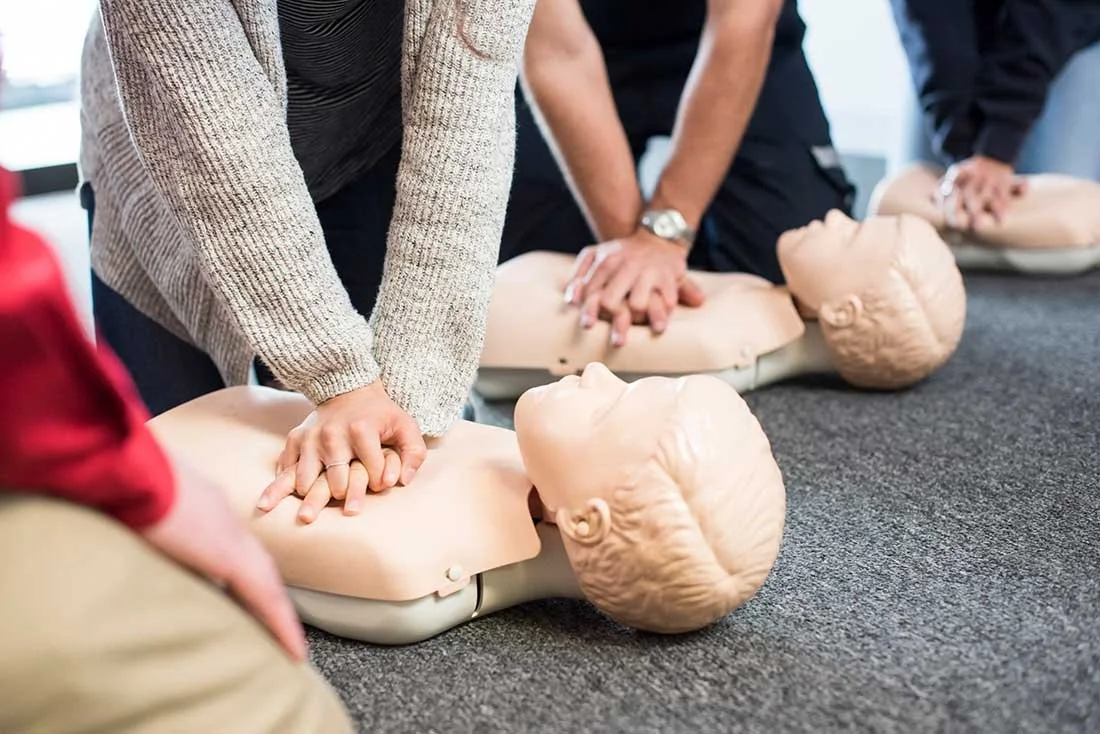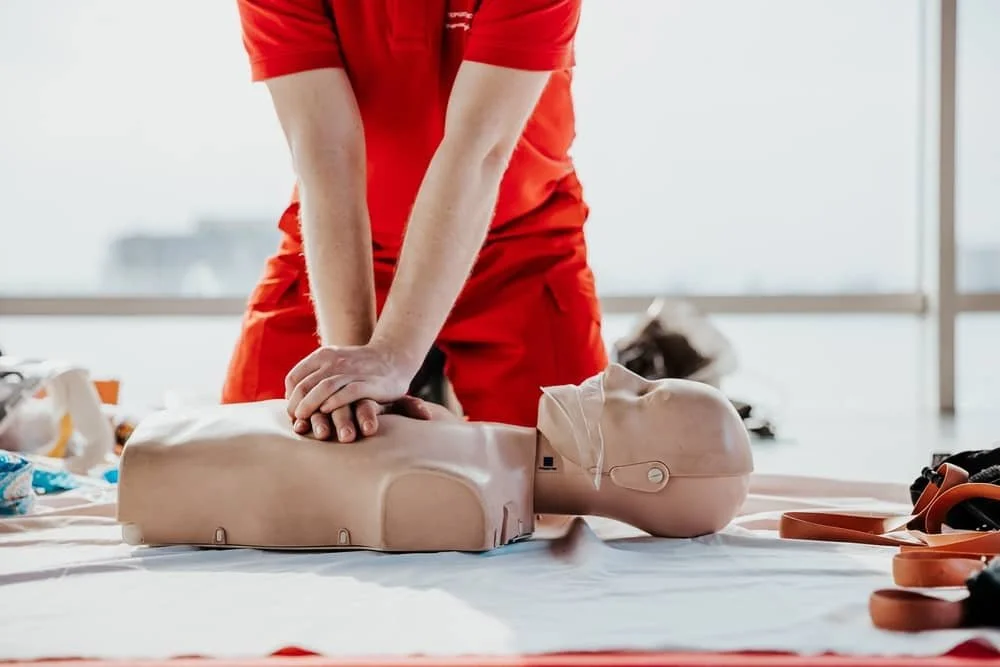
Upcoming Courses

Adult & Pediatric CPR/AED Skills
What You'll Learn
In order to help you respond safely to a range of medical problems, our BLS class schedule includes coursework in:
Rapid Assessment and Visual Survey
CPR/AED for Adults, Children and Infants
Obstructed Airways
Opioid Overdoses
Critical Thinking, Problem Solving, Communication and Teamwork
The Emergency Medical Services System
Legal Considerations
Precautions
BLS vs. CPR: What’s the Difference?
When every second counts, it’s important to know the right steps to take. That’s where CPR and BLS come in.
CPR (Cardiopulmonary Resuscitation) is basic emergency training that teaches you how to respond to someone in cardiac arrest. It’s ideal for the general public and workplace responders. Whether an emergency happens at home, school, or in your community, CPR training gives you the skills and confidence to take action and help save a life.
BLS (Basic Life Support) is designed specifically for healthcare professionals and first responders. It builds on standard CPR with more advanced skills and a deeper understanding of critical care situations. Red Cross BLS courses follow the latest medical guidelines and meet the training and credentialing standards required in clinical settings.
Both courses teach life-saving skills—but BLS is more advanced and intended for medical professionals, while CPR is perfect for anyone who wants to be prepared to help in an emergency.

BLS for Healthcare Providers
What You'll Learn
In order to help you respond safely to a range of medical problems, our BLS class schedule includes coursework in:
Rapid Assessment and Visual Survey
CPR/AED for Adults, Children and Infants
Obstructed Airways
Opioid Overdoses
Critical Thinking, Problem Solving, Communication and Teamwork
The Emergency Medical Services System
Legal Considerations
Precautions
BLS vs. CPR: What’s the Difference?
When every second counts, it’s important to know the right steps to take. That’s where CPR and BLS come in.
CPR (Cardiopulmonary Resuscitation) is basic emergency training that teaches you how to respond to someone in cardiac arrest. It’s ideal for the general public and workplace responders. Whether an emergency happens at home, school, or in your community, CPR training gives you the skills and confidence to take action and help save a life.
BLS (Basic Life Support) is designed specifically for healthcare professionals and first responders. It builds on standard CPR with more advanced skills and a deeper understanding of critical care situations. Red Cross BLS courses follow the latest medical guidelines and meet the training and credentialing standards required in clinical settings.
Both courses teach life-saving skills—but BLS is more advanced and intended for medical professionals, while CPR is perfect for anyone who wants to be prepared to help in an emergency.

BLS for Healthcare Providers
What You'll Learn
In order to help you respond safely to a range of medical problems, our BLS class schedule includes coursework in:
Rapid Assessment and Visual Survey
CPR/AED for Adults, Children and Infants
Obstructed Airways
Opioid Overdoses
Critical Thinking, Problem Solving, Communication and Teamwork
The Emergency Medical Services System
Legal Considerations
Precautions
BLS vs. CPR: What’s the Difference?
When every second counts, it’s important to know the right steps to take. That’s where CPR and BLS come in.
CPR (Cardiopulmonary Resuscitation) is basic emergency training that teaches you how to respond to someone in cardiac arrest. It’s ideal for the general public and workplace responders. Whether an emergency happens at home, school, or in your community, CPR training gives you the skills and confidence to take action and help save a life.
BLS (Basic Life Support) is designed specifically for healthcare professionals and first responders. It builds on standard CPR with more advanced skills and a deeper understanding of critical care situations. Red Cross BLS courses follow the latest medical guidelines and meet the training and credentialing standards required in clinical settings.
Both courses teach life-saving skills—but BLS is more advanced and intended for medical professionals, while CPR is perfect for anyone who wants to be prepared to help in an emergency.

Babysitting Basics
Babysitting Basics Certification Course
Our Babysitting Basics Certification Course, created by the Red Cross, is the perfect way to gain the skills and confidence needed to become a responsible and capable babysitter. This 4-hour virtual course is designed for beginners and covers essential topics like child care, safety, emergency response, and how to handle common babysitting challenges.
✔️ Learn how to care for infants and children
✔️ Understand safety protocols and emergency preparedness
✔️ Gain tips on entertaining and engaging kids
✔️ Build confidence in handling real-life babysitting situations
Upon completion, you’ll receive a Babysitting Basics Certificate, giving you a competitive edge when applying for babysitting jobs.
Join us and take the first step toward becoming a trusted babysitter! Sign up today!

